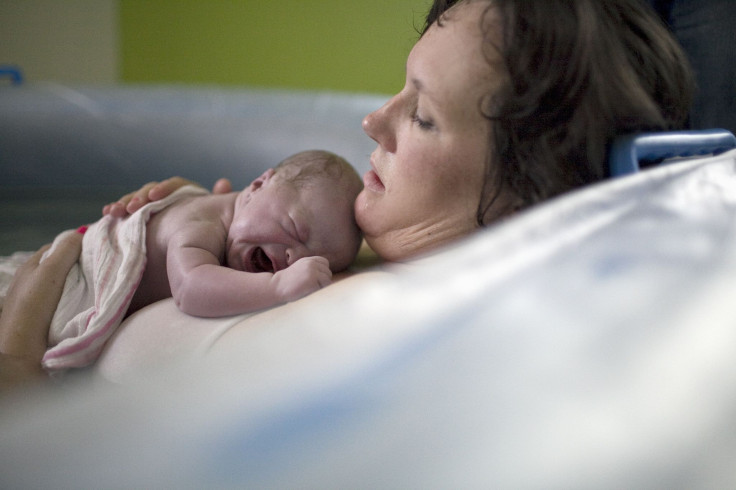Women Having Natural Birth At Home May Be OK If There Were No Major Risk Factors During Pregnancy

Home birth may be OK for women with low-risk pregnancies, suggests a study Monday in the Canadian Medical Association Journal.
In the past, home birth has been associated with an increased risk for severe maternal and neonatal complications, like emergency hospitalization and death. But the present study concludes planned home births don’t pose any more harm to the baby than planned hospital births do. Lead author Dr. Eileen K. Hutton, of McMaster University in Hamilton, Ontario, told Reuters Health the findings weren’t surprising, "but were very reassuring."
"When studies are well designed and carried out, the data consistently find that when women with midwives in a system of well integrated home and hospital birth care give birth at home, outcomes are similar," she added.
Hutton and her team compared 11,493 home births and 11,493 planned hospital births among low-risk women in Ontario over the course of three years to determine the risk for stillbirth, neonatal death, or other serious events. Low-risk refers to women with no risk factors, like maternal alcohol or drug dependency, chronic high blood pressure, diabetes (type 1 and gestational), heart conditions, and HIV, Reuters cited. While first-time mothers were included, 65 percent had previously given birth.
About 75 percent of women who planned to give birth at home were able to do so in comparison to 97 percent of women who planned to give birth at the hospital. And of those who had home births, 8 percent ended up needing emergency services compared to less than 2 percent in the planned hospital group. But, researchers found hospital births results in more labor augmentation, assisted vaginal delivery, and Cesarean section.
"Compared with women who planned to birth in hospital, women who planned to birth at home underwent fewer obstetrical interventions, were more likely to have a spontaneous vaginal birth and were more likely to be exclusively breastfeeding at three and 10 days after delivery," they wrote.
In Ontario, midwives tend to an estimated 10 percent of births, with 20 percent of those being home births. As both home births and midwifery grows in Ontario, researchers said "it will be interesting to see whether the lower intervention rates that have been consistently observed to date among women who plan home births are sustained."
Reuters reported most studies find home birth is less expensive than hospital birth, even in countries offering universal health care, like Canada. But maintain a low-risk pregnancy, in which a home birth is ideal by this study’s definition, can be complicated.
"Most pregnancies start out as seemingly 'low-risk,' but complications may occur or surface along the line as the months pass by," Ole Olsen, a senior researcher at the University of Copenhagen in Denmark, who was not part of the new study, told Reuters. "The ‘challenge’ for a pregnant woman is to stay healthy all the way to term (i.e. 37 weeks), without running into any complications."
These results may also vary in the United States — the smooth transition midwives need to transport and transition from home to hospital isn’t as clearly laid out as it is in Canada and Europe. This could change if the rate of home births and midwifery in the states continues to grow.
In 2012, Time reported U.S. babies being delivered by midwives had hit an all-time high, likely a direct response to the rising C-section rate. And according to the Centers for Disease Control and Prevention, the percentage of home births in the U.S. has risen from 1.26 percent in 2011 to 1.36 percent in 2012.



























